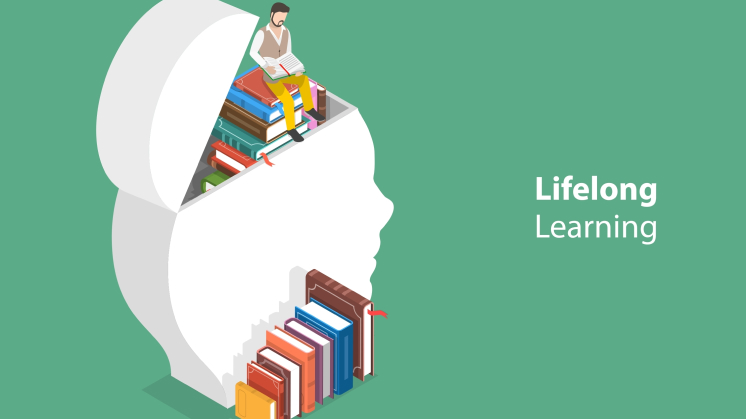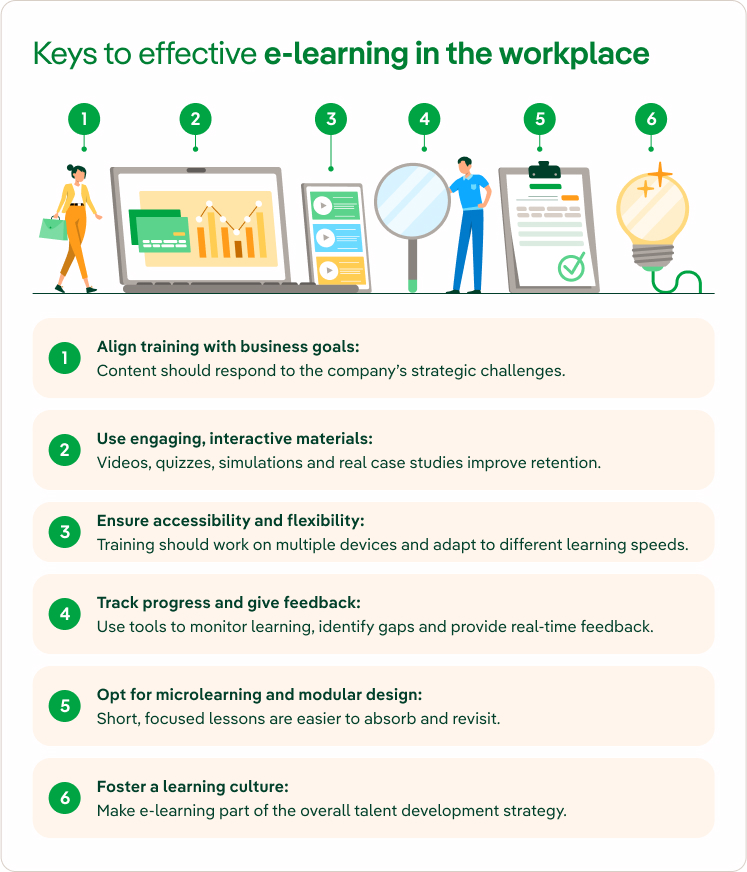What is lifelong learning?
The value of continuous learning in a constantly changing world
In a fast-evolving labour market, staying professionally relevant means constantly updating and adapting our skills. Lifelong learning offers an effective response to this new reality, both for organisations looking to invest in their people and for individuals adopting a mindset of continuous growth. The most successful professionals and businesses understand that learning never stops. A culture of lifelong learning encourages agility, resilience and long-term success, enabling people and organisations to thrive in unpredictable environments.

Why is lifelong learning important?
Not long ago, the knowledge gained at university or through initial training was enough to last an entire career. But that has changed. With the internet and artificial intelligence, information is evolving at an unprecedented pace. This means we must continually update and expand our skills to keep up. As futurist Alvin Toffler once wrote: “The illiterate of the 21st century will not be those who cannot read and write, but those who cannot learn, unlearn and relearn.”
That idea has never been more relevant. Education is no longer a single stage in life, but a continuous process. Lifelong learning has become a new educational paradigm, helping people stay aligned with market demands, technological progress and personal career goals.

What are nanodegrees?
Online courses that will change your life.

Learning by doing
A methodology to boost in-company training.

Training and talent development
We are committed to a model of learning that combines experience, relationships and training.

Classroom-based versus online education
Remote training or classroom-based training? Which is best for you?
Benefits of lifelong learning
For individuals:
For organisations:

 SEE INFOGRAPHIC: Keys to good business e-learning [PDF] External link, opens in new window.
SEE INFOGRAPHIC: Keys to good business e-learning [PDF] External link, opens in new window.
The future of learning: Flexible, digital and accessible
Technological progress has made lifelong learning more accessible than ever. Today, professionals can access high-quality, flexible training online – often free of charge. Whether updating skills or preparing for a new role, there’s a platform for every learning goal.
A great example is microcredentials – digital certificates that validate specific skills gained through short, targeted courses. These often come as digital badges: verified ways to show what you’ve learned. They’re flexible, accessible and market-oriented.
AI tutors are also on the rise. These tools use artificial intelligence and machine learning to support learners with personalised lessons, real-time assessments and instant feedback. They simulate a human teaching experience, making learning more effective and engaging.
Immersive learning with VR/AR (virtual and augmented reality) offers safe, realistic and interactive environments. It allows users to practise skills in simulated settings, such as surgeons rehearsing complex procedures or exploring anatomical structures in 3D.
MOOCs (Massive Open Online Courses) are another example. These are open to everyone, with no cap on participation, offering affordable and flexible ways to learn new skills. Topics range from IT, languages and engineering to psychology, creative writing, electronics, biology and marketing.
Popular platforms include Coursera, which offers free and paid courses, and Udacity, which provides tailored learning for individuals, businesses and governments, plus free content in tech and business. As of early 2025, Coursera had over 175.3 million registered users and Udacity more than 21 million students in 195 countries.












